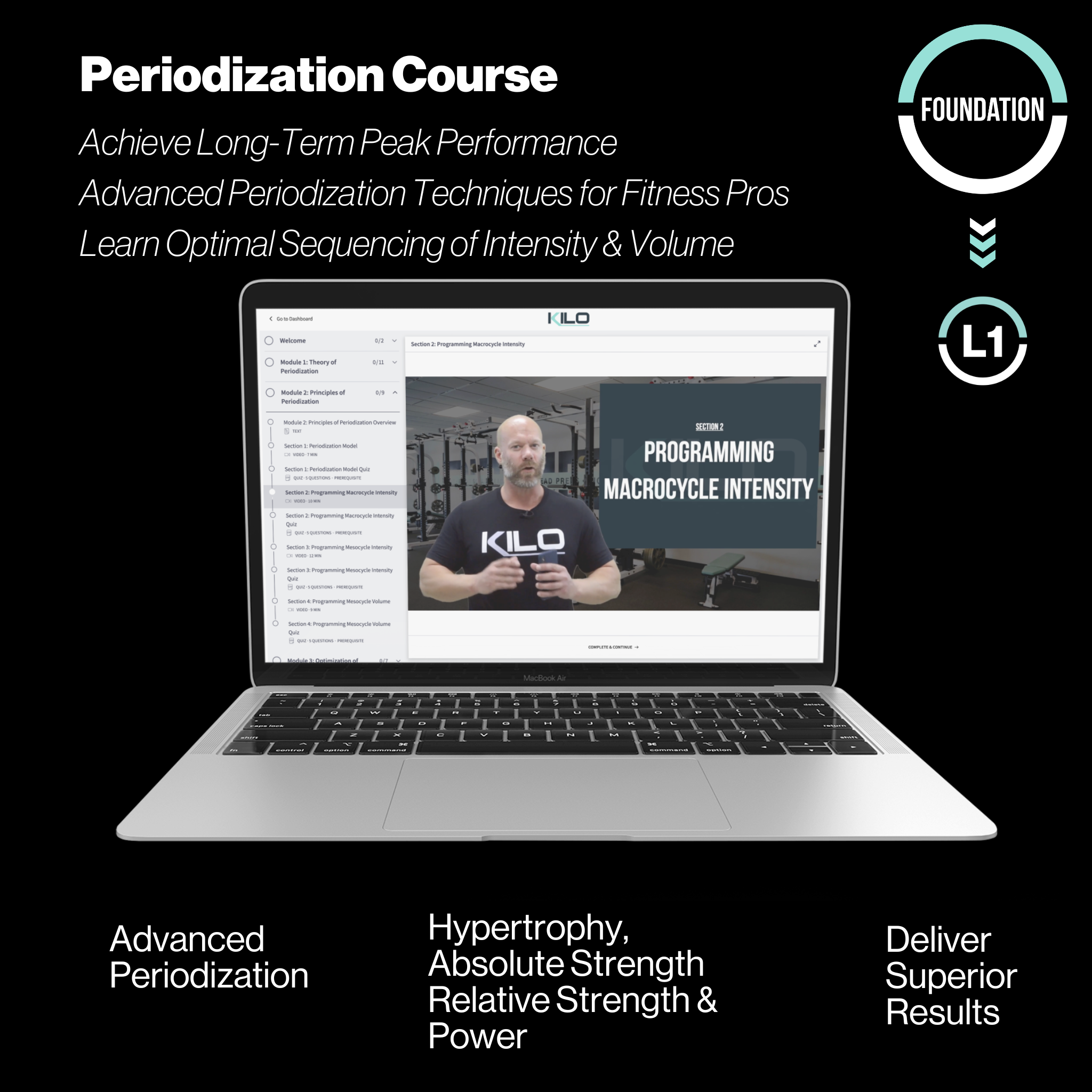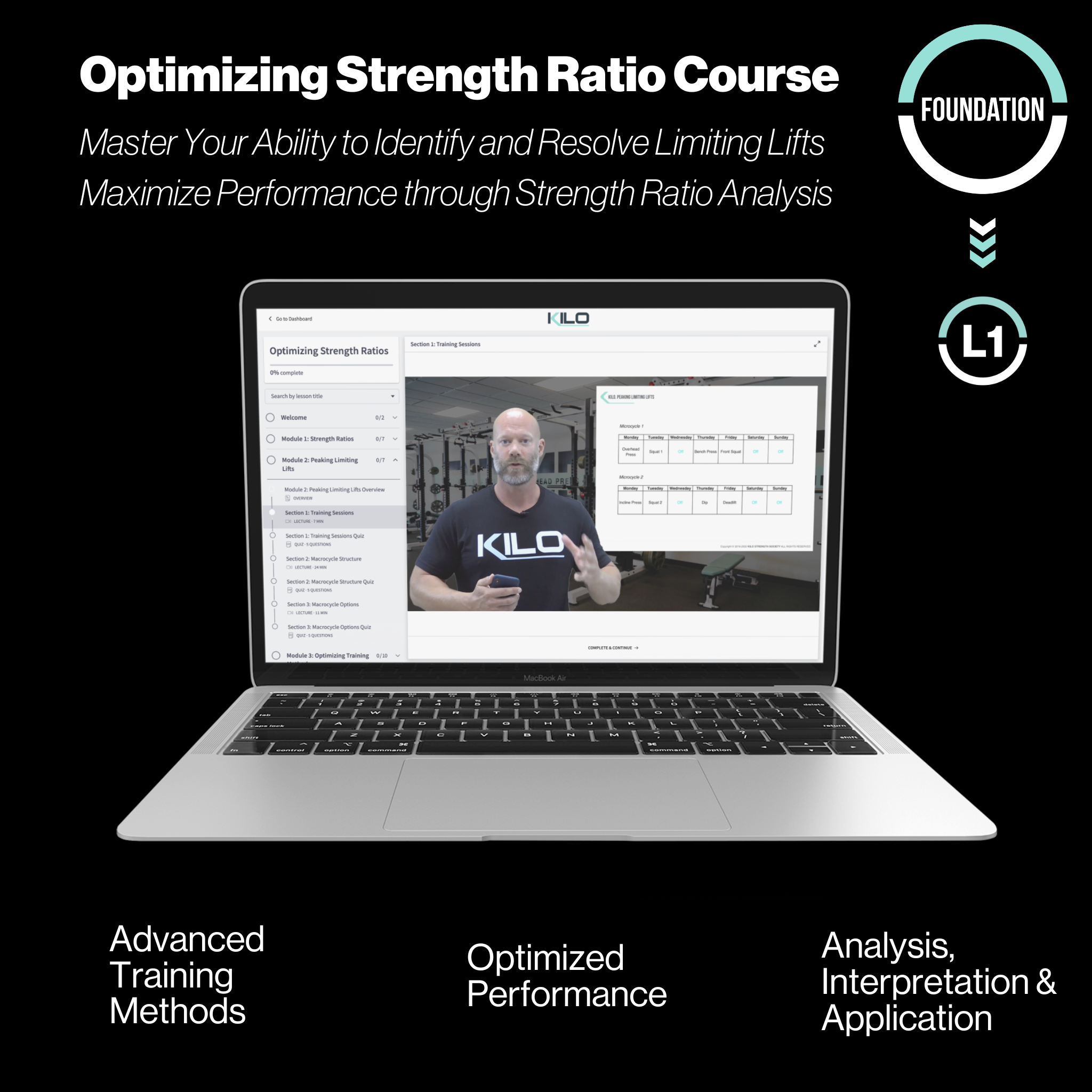Progress in strength training isn’t a straight line. It’s a structured build, phase by phase, designed to deliver specific adaptations over time. That structure, periodization, is the foundation of sustainable, long-term development.
At KILO, we view periodization as the system that gives context to every set, rep, and method. Without it, programming becomes reactive and inconsistent. With it, you can guide trainees toward strength, hypertrophy, and performance with precision.
In this article, we outline the core principles that shape periodization. You’ll learn how to think beyond individual sessions and start structuring training to compound results over time.
What Is Periodization?
At its core, periodization is the strategic organization of training variables across time. It tells you:
-
What to train
-
When to train it
-
How to progress it
The goal isn’t just to train hard. The goal is to train with direction, so each phase builds on the last and sets up the next.
Why Periodization Matters
Random programming leads to random outcomes. Periodization provides a framework to:
-
Manage fatigue and recovery
-
Target specific qualities like hypertrophy, strength, or power
-
Sequence methods to maximize transfer
It answers the question: how do we keep improving, year after year?
Key Elements of Periodization
To understand how periodization works, it helps to break it down into core components:
1. Timeframes
Periodized programs are structured across multiple time scales:
-
Macrocycle (The Big Picture): Typically 12 weeks at KILO. Represents one full cycle of development.
-
Blocks (Half of a Macrocycle): Usually 6 weeks. Combines two training phases to guide loading and structure.
-
Mesocycles (3-week phases within the macrocycle): Each focuses on a specific training quality.
-
Microcycles (One Week): Weekly plans that organize exercises, methods, and recovery.
Every microcycle supports the mesocycle. Every mesocycle supports the block. Every block supports the macrocycle.
2. Phases
Each macrocycle includes a sequence of training phases:
-
Accumulation: Higher volume, submaximal intensity.
-
Focuses on building work capacity, technical efficiency, and hypertrophy.
-
Intensification: Lower volume, higher intensity.
-
Develops force output, strength expression, and neuromuscular efficiency.
At KILO, we typically use two accumulation and two intensification phases in a 12-week macrocycle.
3. Progression
Progression is the link between sessions, weeks, and months. It determines how training variables evolve:
-
Volume: total sets and reps over time
-
Intensity: load relative to 1RM or perceived effort
-
Density: work performed within a time frame
A well-structured program manipulates one or more of these variables each week to drive consistent adaptation.
Periodization Models
There’s more than one way to organize training. The model you choose depends on the lifter’s needs, training age, and the primary goal.
Three broad models we apply at KILO:
1. Linear Periodization
-
Emphasizes one quality at a time (e.g., hypertrophy or strength or power)
-
Easy to manage and ideal for less experienced lifters
-
Progresses intensity upward while decreasing overall volume
2. Undulating Periodization
-
Alternates training stress across phases
-
May reintroduce hypertrophy or volume mesocycles after strength work
-
More advanced, often used in longer-term development plans
3. Wave Periodization
-
Coaxes adaptation through a gradual implementation of targeted strength qualities.
-
Uses recurring short-term linear progressions in volume and intensity
-
Allows for consistent forward movement without overstaying in one adaptation
Each model has its place. The key is matching the structure to the athlete’s capacity and the outcome you want.
Coordinating Qualities for Transfer
One of the major benefits of periodization is that it allows you to coordinate adaptations across time.
-
Hypertrophy phases improve the raw capacity for strength.
-
Strength phases develop force expression and set the stage for power.
-
Power phases enhance the ability to apply force quickly and explosively.
By structuring training with these relationships in mind, you can reduce plateaus and enhance transfer to higher-level performance.
How Periodization Prevents Stagnation
Most plateaus don’t come from undertraining; they come from poor sequencing.
If every phase looks the same, or if qualities are trained in isolation without connection, adaptation slows down. Periodization solves this by:
-
Preventing overstimulation of the same stressors
-
Providing natural shifts in training emphasis
-
Allowing recovery of previously taxed systems while introducing new challenges
The KILO Perspective
We don’t teach one-size-fits-all templates. We teach a system that helps coaches:
-
Choose the right periodization model
-
Align each phase to the goal of the macrocycle
-
Progress volume, intensity, and method usage across time
Every decision is made with a clear understanding of training age, recovery ability, and training goals.
Final Thoughts
Periodization is the architecture of training. Without it, even the best methods lose power. With it, you can take a trainee from novice to advanced with a clear progression that supports long-term development.
If you're interested in learning how to implement this across various training goals and experience levels, our Periodization Course outlines the full system, built from the ground up to teach clarity, structure, and coaching strategy.
Train with systems. Coach with clarity. Progress with purpose.







Share:
The Numbers That Guide the Process: Why Tracking Metrics Matters in Strength Training
Optimization of Periodization: Engineering Progress Through Smarter Structure